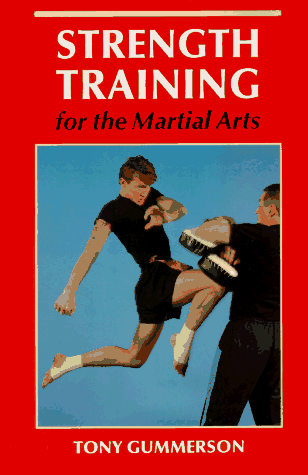Martial Arts
4 total works
Strength is another aspect of fitness that is important to the keen martial artist. After outlining muscle types, their structure and function within the body, Tony Gummerson describes ways to train for specific kinds of strength. He shows how to work out systems of sets and repetitions, and includes advice on safe procedures and progressive resistance exercises. He also describes how to improvize with inexpensive equipment, such as ropes and chairs, and how to use a partner's bodyweight instead of complicated gymnasium apparatus to achieve excellent results. There are examples of schedules and practices to suit the needs of any student at elementary, intermediate or advanced level.
Successful martial arts practice requires thorough physical conditioning. This book concentrates on the martial artist's need for body suppleness. The author's background as a sports physiologist enables him to pinpoint the factors affecting mobility and the implications of poor flexibility. He explains why the type of training required is different for each martial art and each individual, and he gives advice on planning suitable programmes. The exercises deal with all parts of the body and include variations for more advanced students. There is also a useful section on the role of flexibility training in rehabilitation after injury, and the way to avoid injury through safe training.
Aimed at senior grade practitioners, coaches and those studying for National Vocational Qualifications, this book examines the different training requirements of novices and recreational and competitive students. It addresses the coaches short and long-term responsibilities, advising on fitness, communication, supervision of injured students and target attainments. By combining the traditional training methods of individual martial arts with current training theory, the author offers teachers the opportunity to devise their own programmes to help all students achieve their potential.


